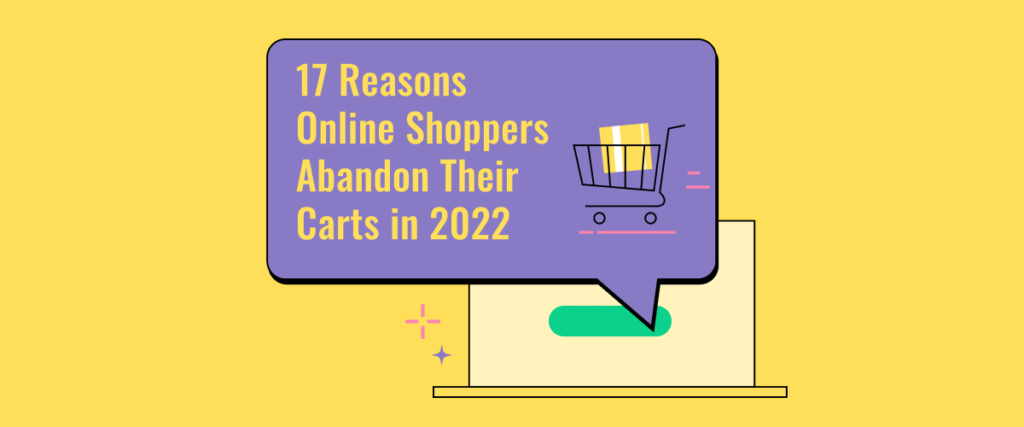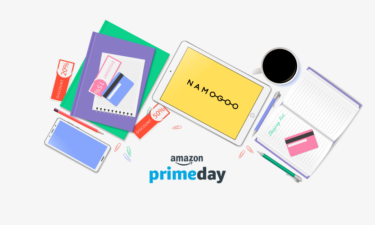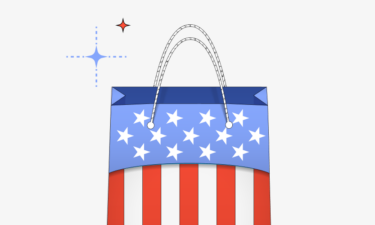Bonus material: Shopping Cart Abandonment Industry Benchmark Report
Shopping cart abandonment rates are shockingly high.
On average, 69% online carts are abandoned before the order is completed. On mobile, that number reaches nearly 75%.
The effects of cart abandonment can be dramatic for eCommerce brands, and while there are plenty of effective strategies to reduce cart abandonment rate and recover already-abandoned carts, before successfully employing these methods you must know the main shopping cart abandonment reasons driving your customers away.
In this article, we’ll explore all the reasons why customers abandon their carts.
Remember, however, that every reason won’t apply to every eCommerce brand. To understand why your customers are abandoning, you must understand:
- The types of customers your company attracts
- The unique demographics, psychographics, and behavioral data of your customer segments
- Your average customer’s purchase intention.
The key to reducing abandoned carts for your own brand is understanding your audience, how they shop, and what drives them away.
17 Shopping Cart Abandonment Reasons Deterring Your Customers
Understanding why your shoppers abandon their carts is the key to lowering your cart abandonment rates. Figuring out why, however, is no easy matter.
For example, some customers might add items to their cart to save them for later. In that case, adding a wishlist or “favorite” feature can reduce cart abandonment rates. Other shoppers might still be early in the decision process, in which case retargeting can help you close the deal.
Read More: How to Reduce Shopping Cart Abandonment Rate: 18 Advanced Strategies
Here are a few other reasons people might abandon their carts–and what it means for your eCommerce company.
#1. Unexpected Fees
A customer adds an item to their cart with every intention of completing the purchase. But when they head to their cart to check out, they are shocked by high taxes, delivery costs, even transaction fees.
Actions to Consider: While you can’t do much about taxes, you can reduce other unexpected fees to smooth the process. Start by building those costs into your pricing. Make shipping costs clear or offer “free shipping over $X spent” to reduce abandonment rates.
#2. Difficult to Navigate Online Store
A customer finds an item they want to purchase, adds it to their cart, but then gets frustrated trying to find other items or complete the checkout process.
Online retail is a 4.28 trillion dollar market — which means there is a ton of competition out there. If your checkout process is complex or people can’t find the products they want, they might click away. Those visitors may intend to complete the purchase later but forget, or just get annoyed and head to a competitor.
Either way, you’ve lost them.
Actions to Consider: Ensure your eCommerce site is seamlessly navigable by:
- Making sure your site loads quickly and the call to action is clear and understandable.
- Ensuring buttons are large, easy to click, and easy to read.
- Consider using a sliding cart option, so the cart is always in view.
- Implementing advanced filtering based on top categories and popular onsite searches.
Your customer’s onsite experience will either prime them to convert or drive them away in droves. Make sure your site is in the former camp.
#3. Lack of Trust Signals
The customer wants to buy but isn’t sure if the product is high quality or if your company is legit. They don’t trust you, and that can impact your bottom line.
Actions to Consider: Consider adding:
- Reviews of your brand
- Trusted payment processors like Paypal or Amazon Pay
- Customer service contact information
- A generous money-back guarantee
- Your own social media handles
- An SSL certificate.
These elements can establish trust and make your customers feel secure enough to complete their order.
Keep in mind that certain customer segments are more wary of online shopping than others, so add additional trust elements for older or less tech-savvy audiences.
#4. Low Purchase Intent
Shopping cart abandonment is not necessarily a sign that something is terribly wrong. While reducing abandonment rates is an important goal, rates are high across the board.
That’s because some customers are just browsing and have a low intent to purchase.
Maybe they enjoy the rush of adrenaline from adding an item to their cart, but aren’t quite ready to pull the trigger.
Or maybe they ended up on your eCommerce site to gather information, but your products caught their eye despite not being in the right mindframe to buy.
Actions to Consider: There are many factors that contribute to your customer’s intent. Sending discounts or reminder emails (often called cart abandonment emails) can help them convert, as can offering a “wishlist” feature so they can save an item without adding it to their cart.
Read More: Customer Purchase Intention: Definition, Why (+ How) to Measure & Convert
#5. Requiring a Guest to Create an Account to Check Out
The customer is ready to click “buy now,” but has to add their email, create a password, and then verify their email. They get annoyed or distracted and abandon their cart.
This introduces friction to the checkout process which erodes the user experience.
Asking users to create an account is a great way to gather information about your audience — but it can also reduce checkout rates.
Actions to Consider: Offer a guest checkout to reduce abandonment rates or make the sign-up process easier. For example, only ask for an email address and a password, rather than their name, location, email address, and age. Or use Facebook or Google logins so shoppers can register with one click.
#6. Your Competitors Have Better Prices
A customer adds an item to their cart, but then decides to check other sites to make sure they are getting a good deal. They might even use one of the many price comparison apps, and when they find out your price is higher, they abandon their cart.
Actions to Consider: Competing on price can quickly become a race to the bottom. Instead of trying to undercut all your competitors, offer stellar customer service (like Zappos) or discounts on multiple items to compete with low-cost sellers. Brands that stress value and service are far less likely to lose customers due to cost.
#7. They Couldn’t Find a Coupon Code
Many customer segments are always looking for a good deal.
And if your brand attracts these types of customers, they may add an item to their cart then head off to hunt for an online coupon to get an even better deal. They get distracted, drawn down a social media rabbit hole, and never come back to check out.
If they don’t leave your site to hunt for a discount code, they may use a coupon browser extension like Honey. If they don’t see a code, they may decide not to convert because they can’t find a coupon.
Actions to Consider: Remarketing abandoned carts via email and offering a small discount for new customers is a common tactic for recovering abandoned carts. But since the vast majority of those who abandon their carts during their session will never return, the better strategy is to capture the shopper while they’re already browsing your site.
The best way to do this is to offer a discount only to those customers who are likely to convert because of one; and offer the minimum discount required to get them over the finish line in their session based on their customer intent.
That’s why Intent-Based Promotions exists: to help eCommerce stores reduce discounting rate and personalize the customer experience onsite to improve conversion rates, reduce shopping cart abandonment and increase average order value.
#8. You Don’t Offer Their Preferred Payment Method
The way consumers pay is changing. In the past, online credit or debit cards were the most common payment method. Today, shoppers can use online wallets, cards, PayPal, Amazon Pay, Apple Pay, and dozens of others. A recent study found that online retailers risk losing 42 percent of online shoppers if they don’t offer users preferred payment methods.
Actions to Consider: Today, sites like Amazon make it easy for customers to check out with one click. Offering trusted payment methods, like PayPal and Amazon Pay, helps shoppers feel secure and streamlines the payment process.
#9. They Are Being Stolen By Customer Journey Hijacking
Customer Journey Hijacking is a widespread problem that taps into customers’ hesitations and can seriously damage your sales numbers.
This problem affects between 15% and 25% of shoppers (especially active online shoppers), inserting ad injections into their device or browser.
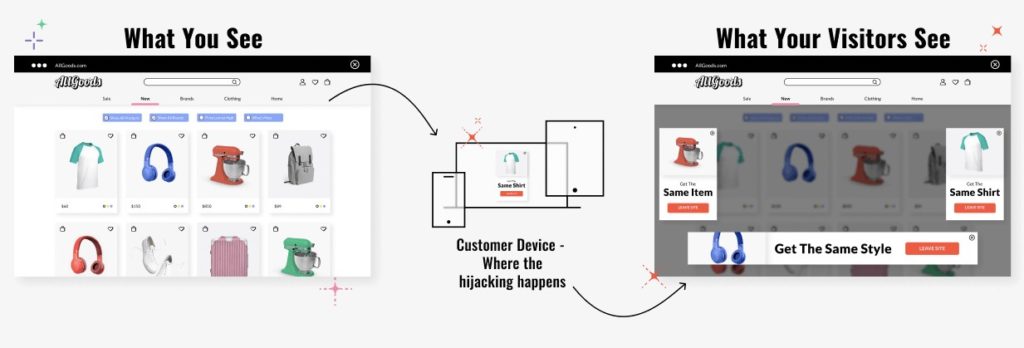
When a hijacked shopper visits your online store, their browser displays targeted ads, often promoting your competitors’ products. Those ads lead customers off your page — and on to your competitors.
Actions to Consider: Prevent customer journey hijacking by blocking ad injections on your site with Namogoo’s Customer Journey Hijacking Prevention. Customers like Dollar Shave Club, Uncommon Goods, and Mobly discovered that 23%+ of their customers were being hijacked.
When they began working with Namogoo, they saw an impressive improvement across eCommerce metrics — like an 8.19% increase in overall conversion rate, and a 6.85% increase in Revenue Per Visitor.
#10. Poor UX
In some cases, visitors may not convert for more than one reason — they might be surprised by shipping costs and also annoyed that you want them to create an account. Or they might struggle to find the cart or be confused by how to check out.
Actions to Consider: Conduct UX (user experience) testing to help you get to the bottom of why customers leave before buying so you can improve the user experience.
#11. Limited Shipping Options
A customer adds an item to their cart, is ready to check out — and then realizes the item won’t be here for days or even weeks.
Consumers have come to expect fast shipping times. If your store only offers standard shipping (which can take five or more days), you might lose shoppers who want their items faster.
Actions to Consider: Offering expedited shipping for a higher cost gives shoppers the option to get their item faster without raising your costs.
#12. Limited Return Policy
Customers want to feel secure making an online purchase. A robust return policy means they can easily return an item if it doesn’t fit, doesn’t fit their expectations, or just doesn’t work for their needs.
Purple, an online mattress retailer, encourages customers to buy a $159 pillow (without even trying it!) by offering a 100-day trial and free returns.

Actions to Consider: Offer a strong, clear return policy so customers can buy with confidence. Adding clear pictures and 360-views can also encourage users who prefer to touch and try on items before purchasing.
#13. Lack of Customer Reviews
A customer adds an item to their cart, but then wonders, “Will it fit my body?” or “Will this work with what I already have?”
Maybe they wonder if the item will break after just a few uses, or what the material feels like. They head to the review section — and find crickets. A lack of reviews is a red flag for most shoppers.
Reviews act as a trust signal, as I already covered above. But these user-generated pieces of social proof go beyond making customers feel secure in their purchase; they’re used to paint a more accurate mental picture of the product as well.
Displaying customer reviews can increase conversion by 270 percent, especially for “riskier” items, such as high-end or wearable items[*].
Zappos makes the most of this strategy by listing the stars and number of reviews right above their product pictures.

This acts as a constant reminder that other shoppers not only have purchased the item but also have experience with it, a key element of the shopping experience that eCommerce stores lack.
#14. Prices Don’t Match Their Local Currency
Even seemingly small bumps in the sales process, like displaying prices in another currency, can increase cart abandonment rates.
Shoppers may wonder if you ship to their location, worry about international shipping costs, or be unsure how to convert the price to their own currency. Since this is a point of friction, it provides a subpar UX as it doesn’t personalize the customer’s experience onsite.
As a result, they abandon their cart.
Actions to Consider: Using dynamic pricing and website personalization can help customers feel right at home — even if you are across the globe.
#15. Your Site Isn’t Mobile Optimized
Mobile shopping is on the rise.
M-Commerce makes up more than 70 percent[*] of the online shopping market — which means if your site isn’t fast and easy to navigate on mobile devices, you could be missing out on a large amount of revenue.
Most themes and eCommerce site builders are mobile-friendly; however, specific elements may not be optimized for smaller screens. Ensure buttons are visible on small screens, form fields are necessary, and offer auto-fill forms whenever possible.
This reduces friction for mobile users, encouraging them to complete their purchase.
#16. Lack of a Site Search Option or Confusing Category Pages
Can customers find what they are looking for on your site?
If you don’t offer a search option, a quick-access navigation or easy to browse categories, customers considering all their options might bounce to a competitor who has everything they are looking for.
Providing a one-stop-shopping experience is one of the reasons Amazon is one of the world’s top online marketplaces.
Actions to Consider: Add a “related items” section to product pages, ensure your site search is user-friendly and make sure site navigation is easy to use.
#17. They Plan to Buy In-Store
Despite the growth of online shopping, some users simply prefer to shop in person. They might scout around for the best price, compare different models or types, but ultimately, they plan to shop in-store.
But, as the saying goes, a bird in the hand is worth two in the bush. Despite in-store shopping intentions, a lot can happen between the customer’s website session and their would-be in-store visit, and it’s likely that the conversion won’t happen.
So it’s best to try to convert the customer online.
Actions to Consider: Many of the solutions discussed above — free shipping, a robust return policy, and customer reviews — can encourage in-store shoppers to convert online.
You can also offer a “buy online, pick-up-in-store” option to give customers the best of both worlds. Check out how Lululemon does this:
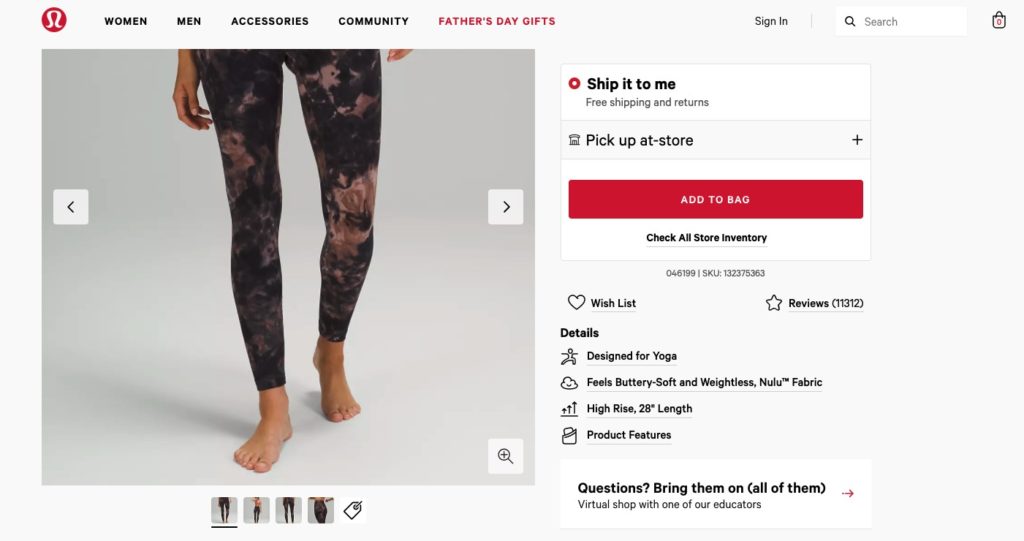
Online shoppers can choose to have their order shipped to them, or to process their order online and pick it up at the store location nearest them.
They benefit from the convenience of online shopping and the instant gratification of in-person shopping; your team benefits from making the sale now rather than risking losing the customer.
A/B Testing Is the Key To Uncovering Why Your Customers Abandon Their Carts
Shopping cart abandonment rates are high throughout the world of eCommerce, but there are many ways to lower the rate – but only if you know why customers leave in the first place.
The best way to understand why customers leave is to use A/B testing.
- Does offering more shipping options lower your abandonment rate?
- What about providing a coupon code to new customers?
- Have you tested your checkout process yet?
Do some digging to figure out why your customers leave, then get to work fixing the problem.



